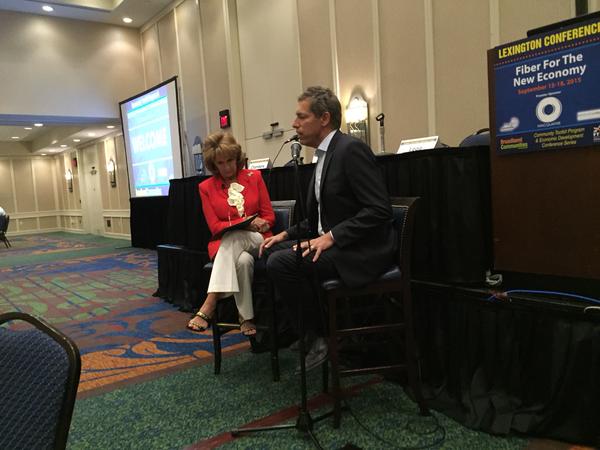Fiber Optics Now Seen as Default Technology Even for Deployment of Rural Broadband, Says FCC Official
LEXINGTON, Kentucky, September 16, 2015 – Fiber-optics is now the default mode for deploying high-speed internet throughout the country, even including rural areas, said the head of the Federal Communications Commission’s office of strategic planning. “Everywhere the country [that] has been able to
LEXINGTON, Kentucky, September 16, 2015 – Fiber-optics is now the default mode for deploying high-speed internet throughout the country, even including rural areas, said the head of the Federal Communications Commission’s office of strategic planning.
“Everywhere the country [that] has been able to get an electric line, it ought to be able to get a fiber cable,” said Jonathan Chambers, chief of the office, widely regarded as the FCC “think tank” for technological advancement.
Chambers, in the kick-off presentation at the Broadband Communities economic development conference here, highlighted the widespread acceptance that everyone deserved broadband deployment at speeds significantly higher than even those put forward in the National Broadband Plan five years ago.This expectation for broadband at speeds upward of 25 megabits per second (Mbps), 100 Mbps, or 1 Gigabit per second (Gbps), Chambers said, extended even to rural areas.The National Broadband Plan, for example, proposed widespread availability of broadband at download speeds of 4 Mbps, and upload speeds of 1 Mbps.“To me, the most remarkable change in just the last three years has been the change in the view [held by many people, including the National Broadband Plan] that 4 Mbps/1 Mbps was the right speed level for broadband,” said Chambers.Referring to Verizon Communications’ decision, late in the last decade, to effectively stop further deployment of its FiOS fiber-optic service, Chambers said, “The general view was that if Verizon can’t make it work, than no one can make it work.”But because of competitive pressure now from Google, and because of “many of you in the room, who decided you could make it work, no one has that discussion over 4 Mbps/1 Mbps.”Instead, he highlighted the recent announcements about the next phase money awards under the Connect America Fund. In those awards, 10 carriers agreed to accept $1.5 billion in annual support to provide broadband to 7.3 million consumers in 45 states.The awards are conditioned on the providers willingness to deployment at rates of at least 25 Mbps download, and 3 Mbps upload.The event here in Kentucky will feature an array of panels and presentations on efforts to deploy and utilize broadband connectivity, including presentations about an effort to build an open-access middle-mile network throughout this state.
Drew Clark is the Chairman of the Broadband Breakfast Club. He tracks the development of Gigabit Networks, broadband usage, the universal service fund and wireless policy @BroadbandCensus. He is also Of Counsel with the firm of Best Best & Krieger LLP, with offices in California and Washington, DC. He works with cities, special districts and private companies on planning, financing and coordinating efforts of the many partners necessary to construct broadband infrastructure and deploy “Smart City” applications. You can find him on LinkedIN, Google+ and Twitter. The articles and posts on BroadbandBreakfast.com and affiliated social media are not legal advice or legal services, do not constitute the creation of an attorney-client privilege, and represent the views of their respective authors.









